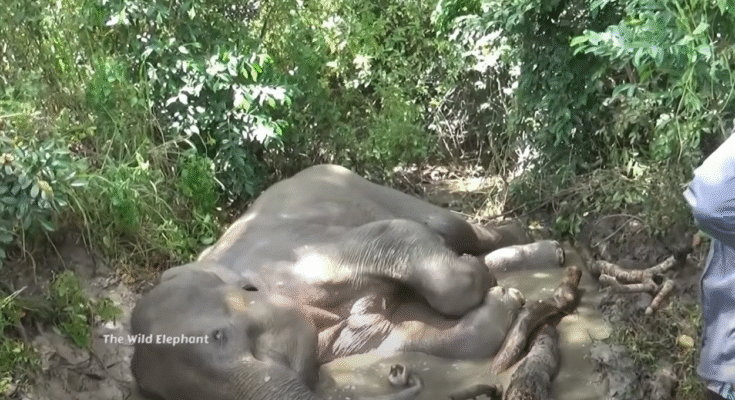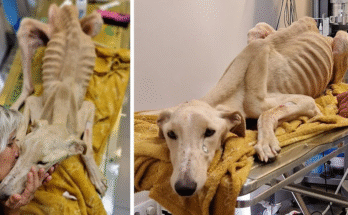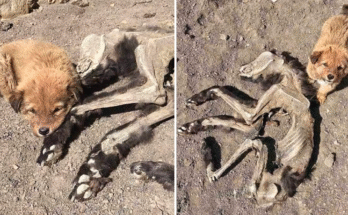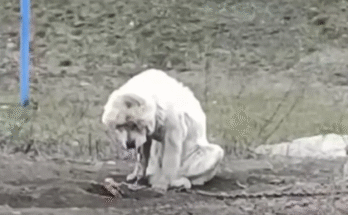Will This Elephant Survive Infection and Collapse After Hours of Grueling Rescue?
The jungle was unusually quiet that day — the kind of silence that comes only when something is deeply wrong. Deep within a clearing in a Southeast Asian forest, a massive elephant lay collapsed, its flanks rising and falling in slow, shallow breaths. Its once-glorious gray hide was caked with mud and blood, and a deep wound on its leg oozed pus — a sign of a dangerous infection that had likely been festering for days. Nearby, a rescue team of veterinarians, forest rangers, and wildlife volunteers worked feverishly, their faces etched with exhaustion and concern.
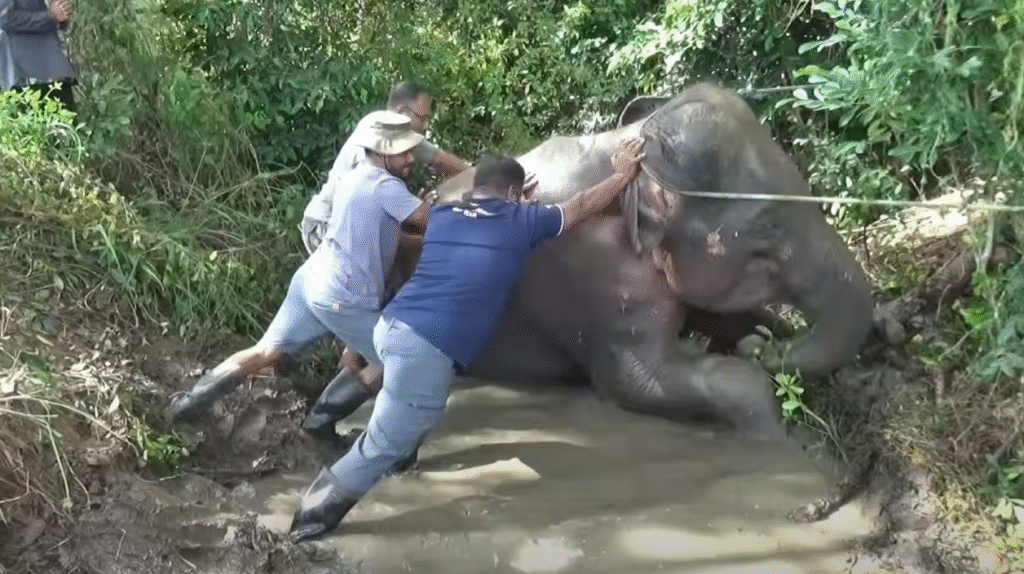
The elephant, a female estimated to be in her late twenties, had been spotted limping days earlier by local villagers who noticed her straying far from her usual herd. It was clear she was in trouble, as she was barely able to walk and seemed disoriented. After multiple attempts to locate her, a team was finally dispatched to intervene. By the time they found her, she had collapsed in a dry riverbed, alone and barely conscious.
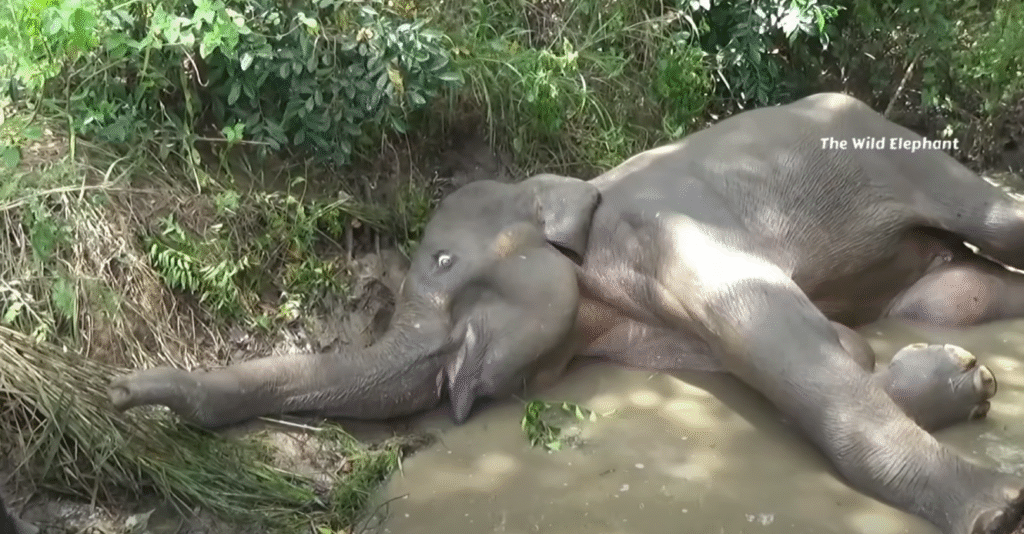
The rescue was nothing short of grueling. For hours, the team worked under the relentless sun, struggling to stabilize the animal. Intravenous fluids were administered to counter dehydration, and powerful antibiotics were given to fight the infection. Vets cleaned her wound, carefully removing necrotic tissue and flushing it with saline and antiseptics. A crane had to be brought in to assist with attempts to lift her body so she could be repositioned to prevent further internal damage from lying in one position too long.
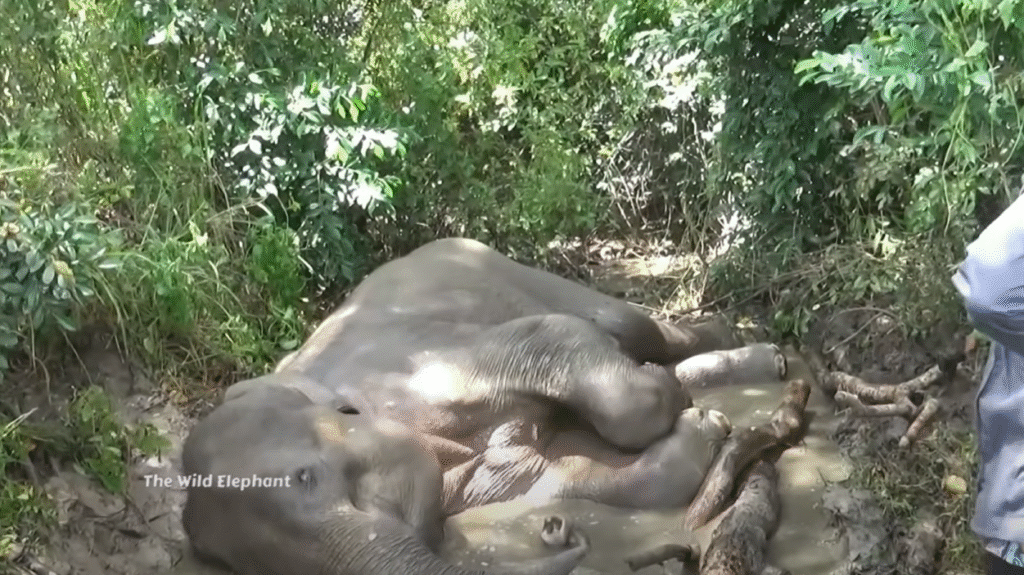
Despite their efforts, the elephant’s condition remained critical. Infection in wild animals is particularly dangerous — not only because of the absence of early medical intervention, but also due to the animal’s immense size, which complicates treatment. The elephant’s leg wound suggested a likely encounter with a poacher’s trap or even a territorial skirmish. Whatever the cause, it had spiraled into a systemic infection, weakening her rapidly.
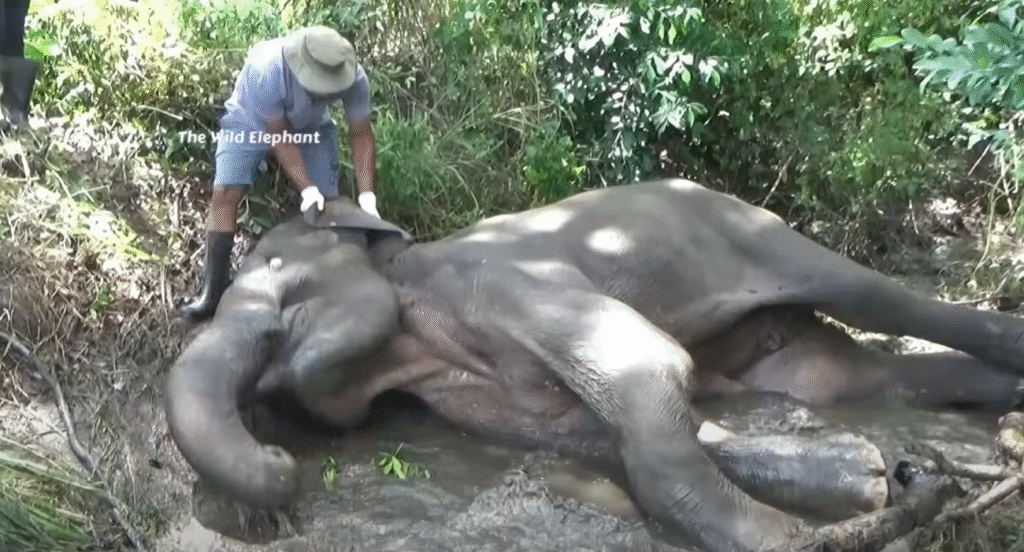
Throughout the night, team members took shifts to monitor her condition. They kept her cool with wet cloths and fanned her to reduce fever. Some whispered to her, calling her by the gentle name “Nari,” meaning “woman” in the local language. She was not just a patient — she was a symbol of the region’s vanishing wild heritage. Her survival meant more than just saving one animal; it was about preserving the dignity and beauty of the wild.
By morning, there were small signs of hope. Her breathing had become steadier, and she had begun to flick her ears — a faint but encouraging movement. She even tried to move her trunk toward a bucket of water, an indication that her spirit was still fighting. The team dared to feel a cautious optimism.
Yet the road ahead remains uncertain. Infections like this often have unpredictable courses. Even with the best medical care, complications such as organ failure, secondary infections, or inability to stand again could still claim her life. But Nari has something that not every wild animal is lucky enough to have: a team of humans who refuse to give up on her.
Will she survive? No one can say for certain. But if strength, compassion, and the will to live mean anything, then Nari has a fighting chance. Her story, already shared on social media and wildlife forums, is inspiring people across the globe. Donations for her ongoing care are pouring in, and her plight is bringing renewed awareness to the dangers wild elephants face from poaching, habitat loss, and human conflict.
One thing is clear: whether she walks again or not, Nari has become more than just a sick elephant in the forest. She is a testament to the resilience of life and the power of empathy — and a powerful reminder that every creature deserves a chance to fight for
